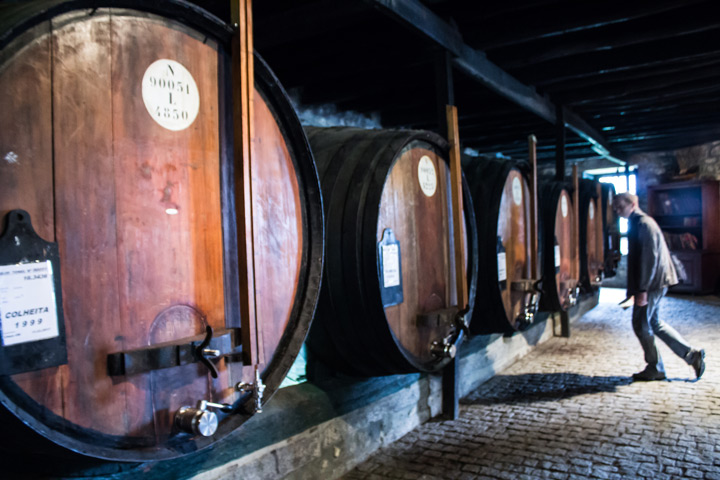Chris & Allyson vs. Europe (2017)
Portugal Day Six: Vila Nova de Gaia and Croft Cellars. Bussaco.
Porto is a beautiful city with a rich history. It has many fine churches, libraries, museums and public squares to explore.
If you ever visit, please write me a detailed account, because we decided to skip it. After a week and a half in Europe, we had our fill of castles, churches, plazas and cathedrals. It would have taken something truly spectacular to keep us in Porto all day, and the city doesn't have a "spectacular" vibe.
But it does have a lot of wine, and we decided to say goodbye to the city by hitting up one of its iconic cellars. Wine is produced in the Douro Valley, but it ages in Porto. For 700 years, this was the law: All the warehouses for every wine company were on the south bank of the river, in the district known as Vila Nova de Gaia. It was set up that way because someone wanted to avoid paying taxes to someone else, and it stayed that way because ... well, inertia. They finally changed the regulations in the 1980s, allowing "port" to be produced elsewhere. But since most companies already had the infrastructure in place, they kept on operating out of Vila Nova de Gaia.
There are many cellars that you can visit, usually by hopping off a tour bus with a group of 38 German people. We were on our own, so we found a cellar that had tours on a Monday morning, plugged it into the GPS and set off for adventure.
In this case, "adventure" once again meant dealing with random road closures. We found the bridge to take us to Vila Nova de Gaia, and we found the street to take us to Vila Nova de Gaia, and we found a police car blocking that street for no apparent reason. They forced traffic uphill, away from the river. And our charmingly stubborn GPS really wanted us to go back and ram the barricade.
It took about 20 minutes of driving through medieval streets in the rain, but we finally found the "back door" to Vila Nova de Gaia. When the roads dropped down to one lane, we ditched the car in a parking garage; the tour buses of Germans were circling, so we had to be close. We grabbed our rain gear and tried a few winding alleys before finding Croft Cellars.

Vila Nova de Gaia, a hub of port wine storage and shipping.
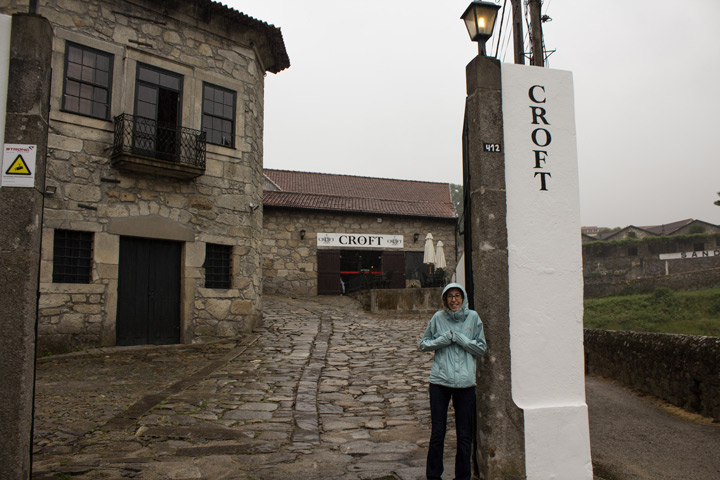
A little rain should not stop you from drinking in the morning.

Keg party! Or is it a cask party? Well, one of those.

Donkey Kong PTSD, activate!
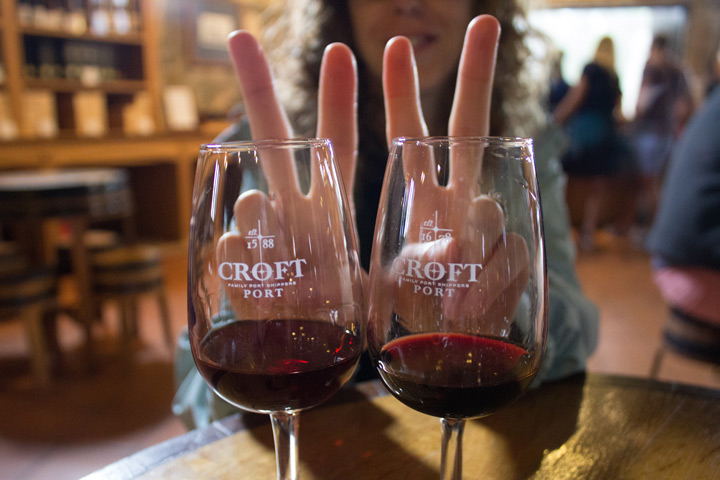
One or two for the road, amirite?
It looks like a very old warehouse, because ... well, it's a very old warehouse. Croft claims to be one of the oldest cellars, dating back to at least 1588. Apparently, you can tell the older companies by their position on the hill. The old ones are halfway up: good access to the river, plus good protection from floods. The "tour" is pretty straightforward. Some very nice employees walk you into a room where barrels are stacked for miles -- like the facility at the end of "Raiders of the Lost Ark," but with booze instead of artifacts that prove a particular religion is real. They give you a quick lesson on port. There are several kinds: Tawny, pink, ruby and white. You achieve these distinctions with different kinds of barrels, adding different kinds of flavors, and allowing different amounts of aging. I no longer remember any of the distinctions, but all ports are somewhat sweet and higher in alcohol content than "regular" wine, so you're not going to screw this up too badly. Probably the most important thing to know is how fast you need to drink a bottle once it has opened. Some bottles can "turn" within a day, while others can last a month. The most responsible thing is to drink any bottle in one day, just to be on the safe side.
The aging and storage of port don't make for a dynamic tour, so they close things out by taking you to the tasting room. We had enough wine to determine that I really like port, but not so much that I couldn't drive a car down medieval streets in the rain. Even Allyson enjoyed it, taking in roughly a glass. Which is impressive before noon on a Monday.
We left Porto after right after, heading toward Lisbon and our flight home the next morning. The agenda was open. The only real hope was to escape the rain and find something memorable along the way. All the better if that something wasn't a palace, castle or church.
With the trusty guidebook as my backup, I sold Allyson on Bucaco (aka Bussaco). According to the book, it's a "magical place." Some monks went to the top of a tree-covered mountain and built a wall enclosing 260 acres of forest. This ensured that they could wander the forest in contemplation of god's works, without being bothered by god's other children. During the 19th century, one of Portugal's delightfully eccentric kings decided to bigfoot the monks, who were bound by religion to forgive him. He dropped an ornate palace in the middle of the walled forest. When the monarchy went away, the palace was converted to a luxury hotel, and a big chunk of real estate outside of the walls became a national forest.
We don't have many magical forests in America, so this seemed like a no-brainer. And when it comes to having no brains, nothing could beat our GPS. We programmed it to find the Hotel / Palace. It took us off the highway and through some towns. We started climbing, and we even passed signs for the Palace Hotel. The roads got more twisty, and increasingly scenic -- we were in the forest now, and the magic had chased the rain clouds away. Other cars disappeared as we continued to zip our way up the mountain. And we kept going up the mountain. And up the mountain. And up the mountain. And then the road ended. We were at a gate built into a stone wall. It did not look like the entrance to a magical luxury hotel, as there were no other people or vehicles around. There was an unpaved path to the right, about the width of a car, disappearing quickly into the woods. And the GPS strongly urged us take it.
I'm all for the spirit of adventure, but rental car agreements are pretty strict about using paved roads. So in an abundance of caution, we parked on the shoulder and decided to walk a bit.
We already knew that out GPS was progressively inclusive in its definition of roads; we had been down more than enough 3/4 lane alleyways to respect the computer's open-minded tolerance of less-privileged thoroughfares. But now we learned that it also considered impassible dirt trails to be roads. Technically, we might have been OK in a monster truck, but good luck renting an automatic transmission monster truck in Portugal. Within a minute, we were way past the drivable portion of the trail, and trees and huge rocks were growing out of the middle of the "road."
Out of curiosity, we walked a little bit, enjoying the forest and coming across a nice scenic vista. The view confirmed that we were nowhere near the hotel entrance, and that our entire afternoon would likely be destroyed if we tried to find it on foot. We laughed, then backtracked to the car and headed downhill.

A slight wrong turn en route to the mountaintop forest at Bussaco.

I mean, it looks nice, but do they have free wifi? The hotel at Bussaco.
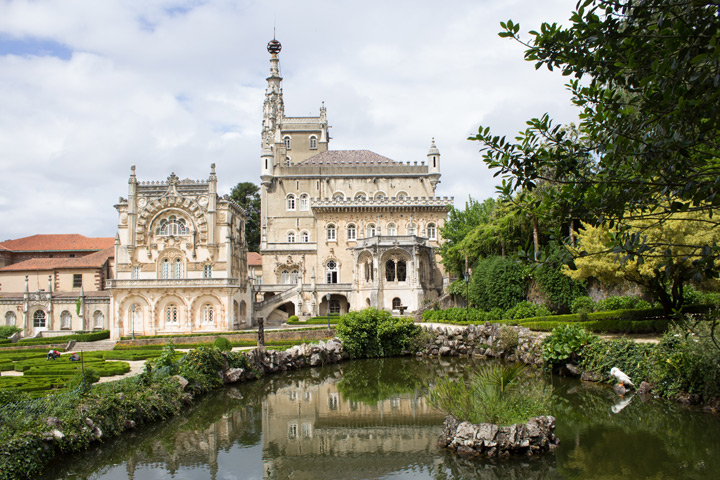
The back yard of the Bussaco hotel is just as nice as the front.

Wandering the walled forest, which is filled with small shrines.
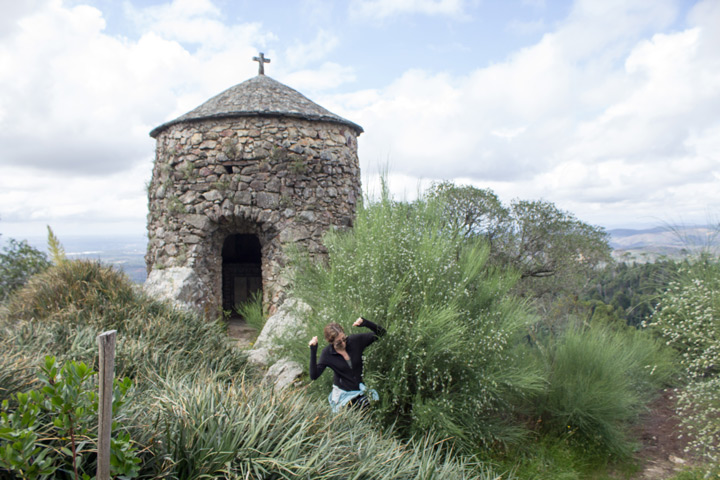
A scenic overlook at Bussaco -- naturally a great spot for another shrine.
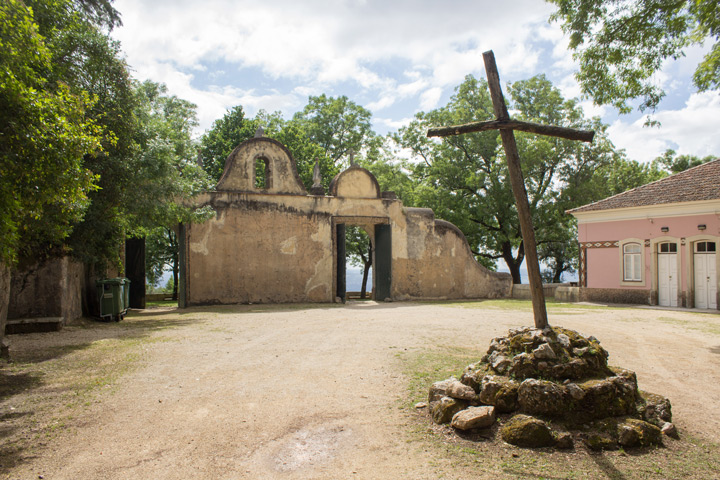
1830s Mexico, or 2017 Portugal? You be the judge!

Another typical seen in Bussaco.

Seeing the forest for the trees. Bussaco.
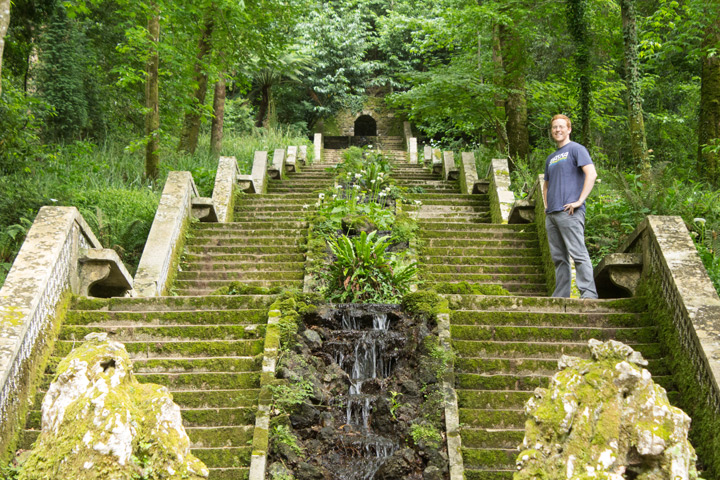
One last stop: The Fonte Fria fountain.
We stumbled across a war memorial -- in the Napoleonic Wars, the forest was the site of a great battle where the good guys must have won. Then we felt our way to the actual entrance to the magic forest, at a gate so obvious that our GPS had to be embarrassed for itself. We parked at the hotel, had some "toasts" at the cafe to deal with our late-afternoon hunger pangs, then set off to experience the magic.
It actually was fantastic. The hotel isn't open to casual visitors –not being disturbed by gawking hicks is apparently one of the luxuries. But we strolled the gardens and admired the building. Then we did our best impression of 18th-century monks and walked the walled forest.
Bucaco is not your run-of-the-mill walled religious forest. The paths have been improved with shrines, arches and other structures. Some of them -- similar to the shrines at Bom Jesus -- show scenes from the life of Jesus. Others are quiet places of worship that have been slowly integrated into the natural surroundings. Every trail leads you to another little treasure, and sometimes to a big one. The Fonte Fria fountain, for example, is a stair-step cascade running down a wooded hill and emptying into a pond where a bunch of swans live. Way to go, monks.
This was a great afternoon. We weren't inspired to join a monastic order, but we did experience a place unlike any we'd seen before. Guidebooks have to take a few liberties, but "magic" was a pretty solid description. "Sweaty" also applied by the time we were done walking, but that's not suited to sales pitches.
It was not our last vacation memory, however. We drove back to Lisbon and the hotel we stayed at before. We had to park the car in that garage before returning it the next morning. And I managed to scrape the BMW's paint. I drove hundreds of miles through cities, towns, wineries, forests and mountain ranges, all without damaging the car. But the last time I had to park, in a garage where there was no traffic and no rush, I hit a wall. In a BMW that I didn't ask for. That's how you make things memorable. (It was a $300 repair, which I paid out of shame.)
Although the war with Portuguese cuisine was basically over, we also fought one last battle. Allyson used the interwebs to locate an honest-to-goodness vegetarian restaurant, which in practice was an Indian joint. The food was great, but the lack of protein clearly weakened the servers, to the point where the meal took hours. The place was also slammed on a Monday night, probably because every vegetarian in Portugal has to eat there.
The only real bummer, however, was having to leave. Vacation was over.
